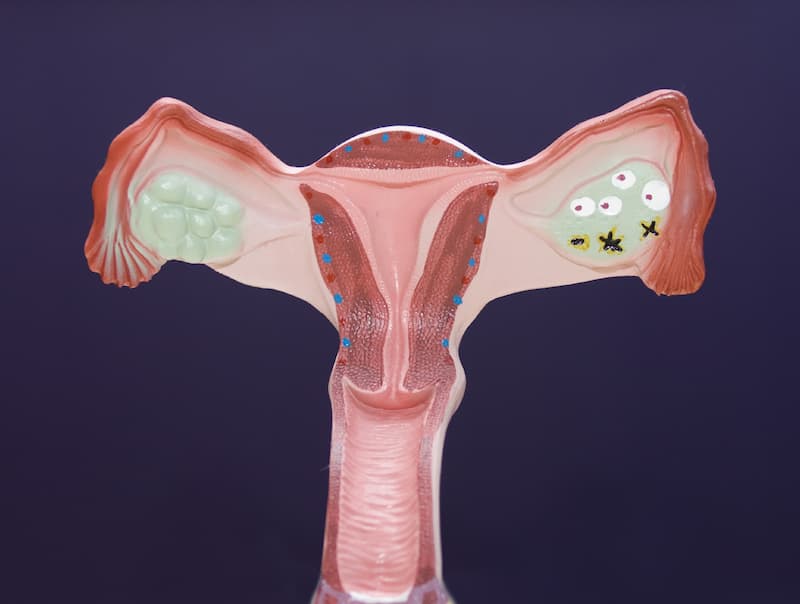Data Show MRD in Nearly Half of Ovarian Cancer Population in Remission
Further studying the biology of minimal residual disease may uncover ovarian cancer vulnerabilities and inform more effective therapies.
“This work shows that what we see on a scan does not always tell the whole story. With SLL, we've been able to uncover disease that was otherwise invisible, and more importantly, study how to target it,” said senior study author Amir Anthony Jazaeri, MD.

Approximately half of patients with ovarian cancer who achieve clinical remission following first-line therapy harbor evaluable minimal residual disease (MRD), which may inform the development of novel targeted therapies and clinical trials, according to findings from a study published in Clinical Cancer Research.1
At the time of a minimally invasive approach called second-look laparoscopy (SLL), 42.1% (n = 40/95) of evaluable patients had surgical MRD, which included a median of 9.0 biopsies per case (range, 3-18). Based on multivariate analysis, those who received neoadjuvant chemotherapy vs primary cytoreductive surgery as up-front therapy experienced a higher likelihood of SLL-positive status (OR, 4.53; 95% CI, 1.65-12.44; P = .003). Additionally, patients with homologous recombination deficiency (HRD)–negative disease had a higher probability of experiencing SLL positivity (OR, 3.55; 95% CI, 1.23-10.24; P = .019).
Across the overall SLL cohort, detectable surgical MRD correlated with worse progression-free survival (PFS; HR, 2.9; 95% CI, 1.7-4.9; P <.001) and overall survival (OS; HR, 7.7; 95% CI, 2.8-20.9; P <.001). Multivariate analysis showed that HRD-positive status favorably correlated with PFS (HR, 0.27; 95% CI, 0.13-0.56; P <.001), while receipt of neoadjuvant chemotherapy correlated with worse PFS (HR, 2.62; 95% CI, 1.34-5.13; P = .005).
Among 44 patients with SLL and evaluable circulating tumor DNA (ctDNA) results (n = 44), surgical MRD presence conferred worse PFS (HR, 3.1; 95% CI, 1.4-6.9; P = .003) and shorter OS (HR, 9.9; 95% CI, 2.2-44.7; P <.001). Additionally, molecular MRD per ctDNA-positive status in this group correlated with inferior PFS (HR, 5.3; 95% CI, 2.3-12.4; P <.001) and OS (HR, 3.6; 95% CI, 1.3-10.0; P = .008).
“This work shows that what we see on a scan does not always tell the whole story. With SLL, we've been able to uncover disease that was otherwise invisible, and more importantly, study how to target it,” senior study author Amir Anthony Jazaeri, MD, a professor in the Department of Gynecologic Oncology and Reproductive Medicine in the Division of Surgery at The University of Texas MD Anderson Cancer Center, stated in a press release on these findings.2 “Using MRD offers 2 key advantages over current approaches for advanced ovarian cancer. First, it can show early whether a treatment is working, allowing for quicker, smaller trials and faster access to new therapies. Second, by studying MRD's biology, we can uncover ovarian cancer's weaknesses and develop more effective, potentially curative treatments.”
Investigators assessed the prognostic and translational value of MRD detection via SLL and ctDNA among 95 patients who completed frontline therapy for high-grade epithelial ovarian cancer. SLL consisted of an outpatient laparoscopic procedure performed at 6 to 8 weeks following the last cycle of adjuvant chemotherapy. Furthermore, those with sufficient tumor tissue for whole exome sequencing during cytoreductive surgery were eligible for inclusion in the ctDNA analysis.
Investigators estimated PFS and OS based on MRD and clinicopathologic statuses. The study also included the use of spatial transcriptomics and proteomics profiling based on serial samples from select patients.
Across the overall population, most patients were White (82.1%) and not Hispanic (90.5%), and had high-grade serous disease (87.4%). Additionally, a majority of the population had stage III disease (67.4%), frontline treatment consisting of neoadjuvant chemotherapy (56.8%), R0 cytoreduction status (73.7%), HRD-negative status (58.9%), and no BRCA mutations (80.0%).
Investigators noted intraoperative complications in 2.1% (n = 2/95) of surgical cases, both of which included bowel injuries necessitating conversion to laparotomy. Another patient needed to convert to a laparotomy for a small bowel resection due to gross disease identified on laparoscopy.
“These findings do not just answer long-standing questions; they open the door to smarter trials, understanding where recurrence comes from, and blocking it from occurring,” Tyler Jacks, PhD, president of Break Through Cancer, said in the press release.2
References
- Knisely A, Dai Y, Barlow GL, et al. Surgical and blood-based minimal residual disease in patients with ovarian cancer after frontline therapy: clinical outcomes and translational opportunities. Clin Cancer Res. Published online August 1, 2025. doi:10.1158/1078-0432.CCR-25-0512
- New study finds hidden disease in nearly half of ovarian cancer patients in ‘Remission’. News release. Break Through Cancer. August 4, 2025. Accessed August 4, 2025. https://tinyurl.com/bdhfyxz2
Late Hepatic Recurrence From Granulosa Cell Tumor: A Case Report
Granulosa cell tumors exhibit late recurrence and rare hepatic metastasis, emphasizing the need for lifelong surveillance in affected patients.